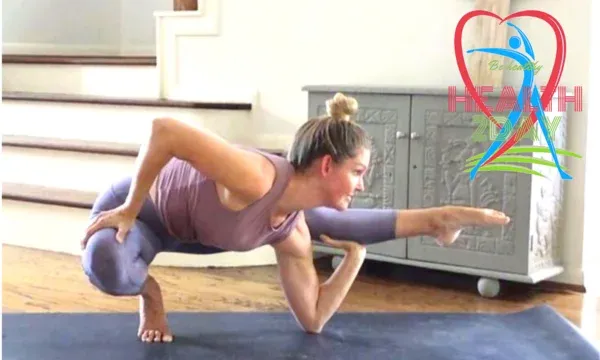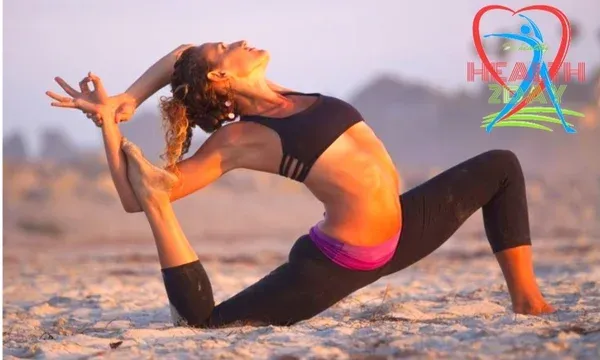Yoga is more than just a sport for the body and has great benefits
While it can be difficult to completely eliminate stress (the only way to do so often requires completely removing yourself from the stressor, which isn't always possible if the stressor is work-, school-, or life-related), there are some things you can do to help alleviate the effects of stress on your body.
For instance, yoga can help you sleep better. The practice itself, which includes mild stretching, deep breathing, and mindfulness, has been shown to release a brain chemical called brain-derived neurotrophic factor (BDNF), which has been demonstrated to help your body's response to stress by lowering inflammation and maintaining a positive mood.
And when it comes to sleep aids, yoga is hard to beat. Yoga is one of the top techniques to enhance sleep, according to the American Sleep Foundation, especially for adult women, who have a tougher difficulty sleeping than males.
A trained yoga instructor, Phyllicia Bonanno, agrees. "Yoga helps you to focus your breath and tap into a calmer state of being while also getting your body moving and blood circulating," she continues. And lately, Bonanno has been emphasizing the importance of achieving a calmer state of mind.
She recently left her full-time teaching job to focus solely on health and wellbeing – an exciting (but stressful) shift that has disrupted her sleep pattern. Yoga, combined with a series of breathing practices and regular journaling, has helped her maintain a consistent sleep cycle with little interruptions. (Related: 5 Stress-Relieving Tips That Actually Work)
Bonanno demonstrates her go-to 15-minute yoga practice for improved sleep. Allow five to ten deep breaths for each stance. "Pay attention to each breath," she says again. "As thoughts, even difficult ones, enter into your head, allow them - now is your opportunity to release and let go," she says. "However, don't dwell on those unpleasant ideas; instead, while you breathe in and out, try to focus on a mantra that is associated with a restful night's sleep."
I am at ease and secure.
I'm going to let go of today's stress.
I am deserving of relaxation.
I look forward to having lovely dreams.
I'll wake up rested and revitalized.
"You may perform this flow immediately before bed," she says, adding that if you choose, you can practise all of the yoga positions for sleep (including savasana) in your pajamas in bed. A yoga mat on the floor, on the other hand, will suffice.
Yoga for Better Sleep in 15 Minutes
How it works: Take 5 to 10 deep breaths while holding each pose. Transition from one stance to the next slowly and deliberately.
A yoga mat, yoga blocks, and a yoga blanket are required (all optional)
Breathing when seated
Sit cross-legged on the floor or in bed, if desired, with a blanket or block under your hips. Draw the crown of the head toward the ceiling and ground through the sit bones. Inhale deeply, one hand on the abdomen, the other on the heart, to fill the lungs with as much air as possible. Close your eyes for a moment. Hold for one to two counts before releasing as you exhale.
Inhale deeply again, allowing your heart to open and grow. Hold for a few moments before exhaling with a loud sigh. When you take another long breath in, imagine letting go of all the stress and chatter from the day. Hold for another five to ten breaths.
Stretch on the side
Inhale as you press your hands together and stretch your arms up toward the ceiling from a cross-legged seated position. Hold for a moment at the top, then gently exhale while bringing the right hand to the outside of the right thigh, about six inches away. Feel a stretch in the left obliques and back by extending the left arm up over the ear while bending the upper body slightly to the right. Allow your eyes to softly close as you gaze up toward your fingertips. Take a few deep breaths at the top, feeling your chest and stomach extend and expand on the inhale, then deflate on the exhale. To return to center, take a deep breath and inhale, then repeat on the opposite side.
Inhale to return to center, palms squeezed together overhead, after completing the second side. Exhale and fold your upper body forward onto your thighs by hinging at the hips (still in criss-cross position). Allow yourself to let go and surrender. Slowly rise to a seated position after a few counts of pause.
Twist while seated
Plant both hands behind your back on the floor while still reclining cross-legged. Allow the chin to tilt forward and the head to dip back slightly as you open up your chest and softly bend backwards. Hold the position for a few counts. Inhale and push your hands together as you bring your arms back to center. Exhale and place the right hand behind the body and the left hand on the outside of the right knee, gently twisting the torso to the right with the left hand. Exhale, then inhale and breathe again, twisting a little more with each exhale. "Wring out" all the unused energy and stress that has been stored in the body. Hold for five to ten counts before releasing and returning to a neutral cross-legged position.
Pose of a Child
Transfer to a tabletop position on your hands and knees. Exhale to return hips to heels and stretch arms out on the mat, palms or fingertips firmly pressed into the floor or bed. To expand up the hips, widen your knees, or keep them together to support the lower back. To relax even more, place a block, pillow, cloth, or blanket under the brow. Continue to inhale and exhale deeply for about five to ten breaths.
Move to a face-up position on the floor or bed, with arms at sides and palms pressing into the floor or bed. Kneel down and plant the soles of your feet on the floor or bed. Lift hips into the air while inhaling and squeezing glutes at the top. Continue to inhale and exhale deeply. (For further support, place your hands beneath your lower back or a soft pillow beneath your shoulders.) Hold for five to ten breaths before releasing. For a few counts, hug your knees to your chest, then release your legs to the mat.
Supine Twist in a Reclined Position
Inhale to draw the right knee in toward the chest while still lying face-up on the floor or bed. Slowly circle the right knee clockwise, then counterclockwise, for two to three counts in each direction, using both hands to assist the action. Exhale slowly and controllably, then bring the outside of the right knee to the left side of the body with the left hand. Gently shift your torso and head to the right, and look at your right shoulder. Hold for five to ten breaths, inhaling and exhaling deeply as you feel the stretch in your back, hips, and glutes. Return to the floor with the right leg and repeat with the left leg, holding for another five to ten breaths.
Bound Angle in a Reclined Position
Draw both legs toward the chest, wrapping forearms around one another for support, while still lying face-up. While breathing, hold for two to three counts. Lower your feet to the mat approximately two to three inches from your glutes and squeeze your feet together at the bottom (if comfortable). Allow knees to splay open (gently) as far as they are comfortable. Allow gravity to continue to pull either knee closer to the floor by bringing the right hand to the belly and the left hand to the heart. Feel the stretch in your hips and groin. Hold the position for five to ten breaths. To release, carefully draw your knees together and slowly lower your legs to the floor or bed, fully extended.
Savasana
Continue to lie face-up in a neutral position with your hands turned slightly to the sides. Close your eyes and take a big breath, as much air as possible into your chest and stomach. Hold for a few seconds before exhaling to deflate the chest and stomach. Rep this inhale-exhale cycle until you're ready to crawl beneath the blankets.


